In this article, you’ll learn what is stud extractor tool? Its working, Issue, Necessity, and How To Use Guide all are explained with pictures. Also, you can download the PDF file at the end of this article.
What is Stud Extractor Tool?
Stud extractor is type of a tool is used when a bolt, drill or screw etc. gets broken in a job to take out the broken part. Stud extractor is fixed on the broken bolt or drill and moved in the reverse order.
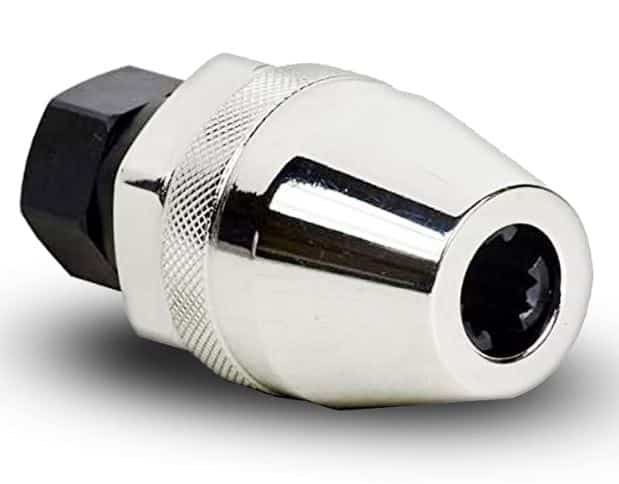
If gets fixed through the threads and takes out the broken bolt or screw as show in the figure. These extractors are commonly used when the fastener head is cut off from the body, and there is no way to hold the fastener to remove it from the hole.
Typically, they have threaded or fluted heads that fit into drilled holes in the shafts of the fasteners. To remove the fastener, the shank of the extractor is gripped and turned with a suitable wrench or drill as the head digs into the shaft.
Read Also: Different Types of Nails and Their Uses [Explained with Pictures]
What is the Issue with Fastener Shear Off?
Like almost every fastening, bolts, screws, and studs tend to seize upon ships due to the challenging marine environment. They can often break when a load is applied to the head. Also, a less tightened bolt is already loose, and the joint does not have enough clamp force to hold the individual sections together.
In this case, bolts can be put under unnecessary shear stress and ultimately break due to sideways slippage between sections. It can also fail due to vibration, shock, or any number of environmental factors that come into contact.
Read Also: Different Types of Clamps [How To Use Guide]
Necessity of Addressing a Broken Fastener
It is the primary function of fasteners to hold components and machinery together under excessive vibrations and pressure while maintaining disassembly capabilities. As I said, fasteners usually break due to vibration, shock, or any number of environmental factors that come into contact with an assembled product.
A shear bolt can stall a project, cause frustration, and cost a lot of unexpected money. It is inevitable that you will come across a stripped, rusted, broken, or greasy stud while fixing things on ships. Therefore, it is helpful to be prepared first.
Read Also: 15 Types of Springs and Their Applications
Right Sizes of the Stud Extractor
Following are the available sizes of the stud extractor, note them below:
| Stud Extractor Diameter (mm) | Length (mm) | Drill (mm) | Diameter of the Stud (mm) |
|---|---|---|---|
| 4 | 55 | 2.8 | 3 – 6 |
| 5 | 60 | 3.5 | 6 – 8 |
| 6 | 65 | 4.2 | 8 – 11 |
| 8 | 75 | 5.5 | 11 – 14 |
| 11 | 85 | 7.5 | 14 – 18 |
How To Remove a Broken Fastener Using Stud Extractor
Let’s consider an engine of a truck, in which three bolts of the exhaust manifold are sheared off in the head. At this moment, a stud extractor is used in order to take out the broken fastener from the manifold head.
The stud extractor is impressive in its simplicity of use and provides ease of operation. The picture below shows one of the three studs broken in the head.
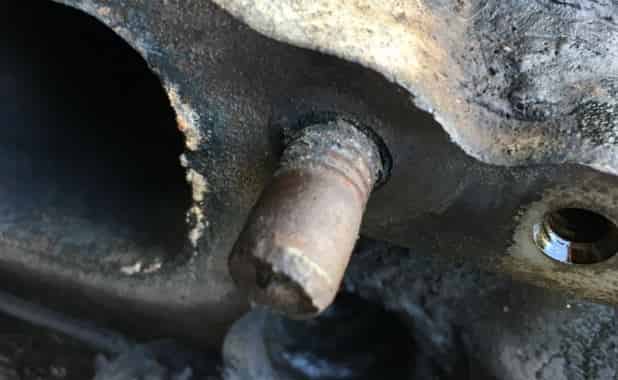
Checkout: Tools and Equipment used in Welding Process [Explained]
Tools Required to Extract a Broken Stud
These are common tools that can be found in any toolbox.
- 3/8” Drive Ratchet
- 10″ Adjustable Wrench
- 12” Adjustable Wrench
The simplistic design of the stud extractor consists of three jaws that grip broken studs with fantastic strength, allowing even the most rigid frozen studs to be removed quickly and easily.
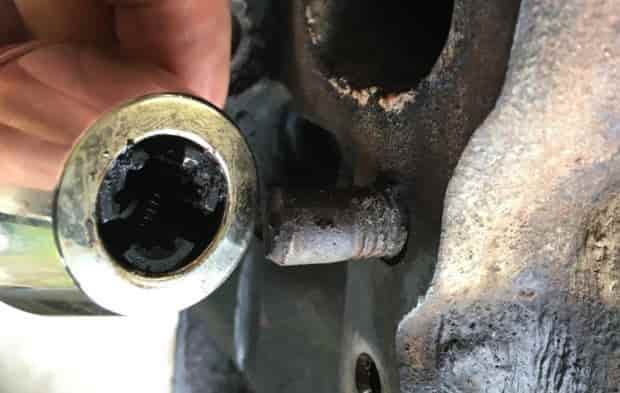
Initially, you need to ensure that the small nut is loosened enough that the extractor can slide over the nut. The extractor nut has left-handed threads, so by turning the nut clockwise (opening the jaws), and counter-clockwise (closing the jaws), the jaws are closed.
Once the extractor is placed over the broken stud, it should be tightened by hand, and then using the two adjustable wrenches, tighten it even more. The stud extractor will easily remove studs from studs of 1/4″-1/2″ and (6mm-12mm) sizes.
With its hex head, the stud extractor is suitable for use with either a socket or wrench and its 3/8″ drive makes it suitable for use with ratchets and impact drivers. Using a 3/8″ drive ratchet, it only took a few seconds for the stud to loosen and fall out.
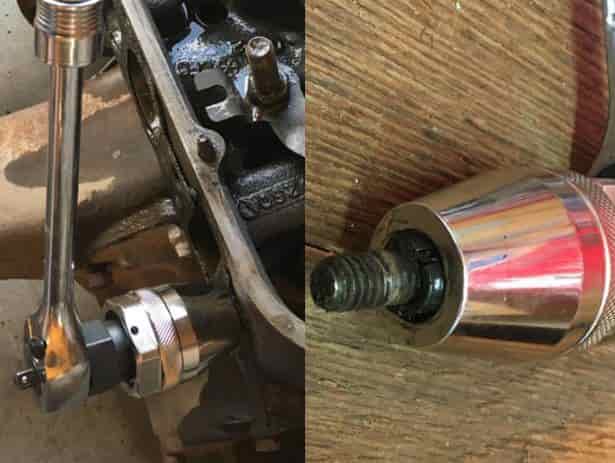
At this point, it is recommended that you must use the same adjustable wrench to loosen the nut (clockwise) and remove the broken stud from the extractor. Repeat the above procedure to remove any more studs quickly and easily if you have more to remove.
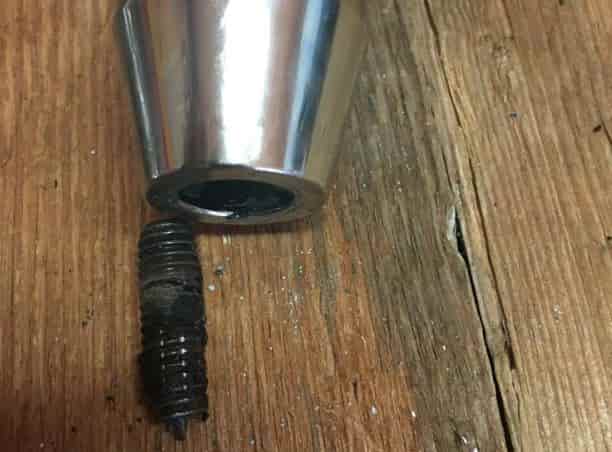
Read Also: Understand About The Screw Thread Terminology
Steps to Remove Broken Screw with Screw Extractor
Follow the below steps to remove the broken screws quickly and safely:
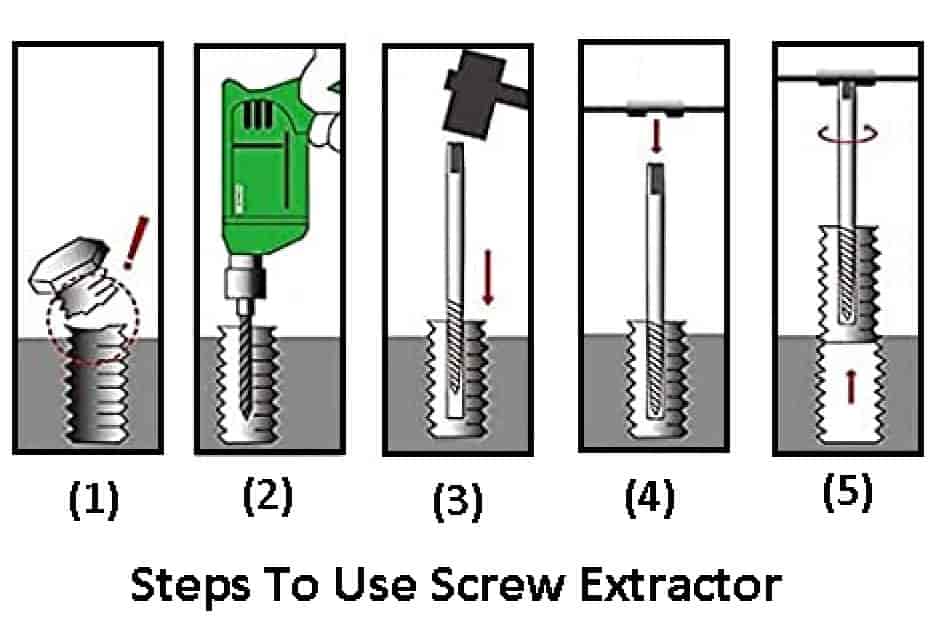
- Select the correct size of the drill and stud extractor to suit the diameter of the stud of the broken screw.
- In order to use the extractor, make sure the hole has been cleaned of any metal chips.
- Now, drill a hole of the recommended diameter in the broken stud.
- At this time, drive the extractor into the hole.
- Next, slide the turned nut over the extractor and turn it clockwise, thus turning the broken unit counterclockwise.
- Finally, the flute grips the drilled unit’s walls and removes them without damaging the threads of the tapped hole.
Wrapping It Up
As I already mentioned above, these tools are only used to remove a broken screw without damaging the surrounding material or the threaded hole. In order to use extractors, a hole must be drilled in the center of the thread of the stud being extracted.
That’s it. Thanks for reading. I hope I have covered everything about the “Anti Lock Braking System.” If I missed something, or if you have any doubts, let me know in the comments. If you liked this article, please share it with your friends.
Want free PDFs direct to your inbox? Then subscribe to our newsletter.
Download PDF of this article:
You might like to read more in our blog: